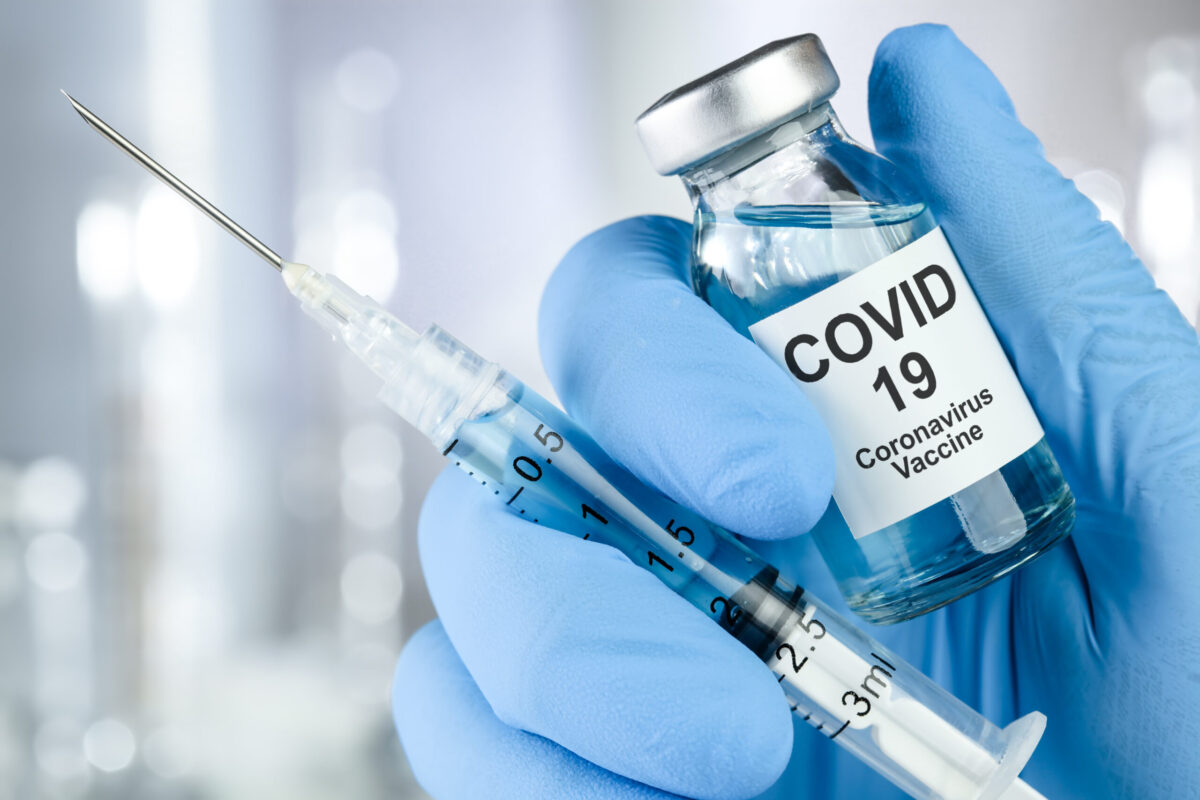As of Friday, May 8, the Kansas Department of Health & Environment (KDHE) said 85 of the state’s 152 COVID deaths occurred in nursing homes. With a total of 540 cases reported in 22 long-term care facilities, that means the COVID mortality rate aside from nursing homes is just 1.1% (67 deaths from 5,961 cases). The announcement was made at the Governor’s press conference.
Kansas’ ratio of nursing home deaths to total COVID deaths is similar to other states. Not all states are reporting nursing home deaths, but among those that are, 52% of all deaths are in nursing homes versus 56% in Kansas. That’s according to data compiled by the Committee to Unleash Prosperity.
KDHE is tracking cases in 76 clusters, with the most cases in 6 meatpacking facilities. There are 1,082 total cases and just 2 deaths. Correctional facilities account for 687 cases and also just 2 deaths. Despite working and living in close quarters, their respective COVID mortality rates are less than half of one percent, at 0.2% and 0.3%, respectively.
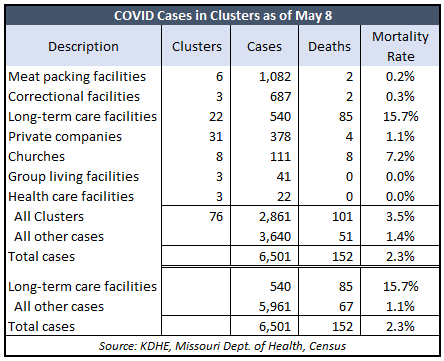 The true mortality rate from COVID is likely much lower than reported from confirmed cases, however, because no one knows how many asymptomatic patients exist that haven’t been confirmed.
The true mortality rate from COVID is likely much lower than reported from confirmed cases, however, because no one knows how many asymptomatic patients exist that haven’t been confirmed.
But even among confirmed and probable cases (for some reason, KDHE began including ‘probable’ cases with confirmed cases in their county breakdowns of total cases as of May 8), only 3.5% of total cases have been admitted to Intensive Care Units. That’s 229 ICU admissions of 6,501 total cases.
ICU admissions and deaths other than in nursing homes are not available by county.
Any death is tragic, whether from COVID, car accidents, heart attacks, cancer, and other causes, but government efforts to control the spread of COVID are simultaneously putting the psychological, medical, and economic well-being at risk for hundreds of thousands of Kansans.
Unemployment and business shutdowns
There have been almost 240,000 initial unemployment claims filed through May 2, which is the most current data available from the Kansas Department of Labor. On the same day there a little less than 5,000 confirmed COVID cases and only about 200 ICU admissions.
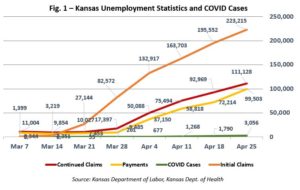
Homebase.com, a scheduling and time tracking tool used by more than 100,000 local businesses across the country, shows the economic devastation in Kansas.
As of May 7, government decisions on who and what is essential have led to a 31% decline in the number of local businesses open since the beginning of the year, and there are 31% fewer hourly employees working.
Cases trending down
Even including cases in clusters, the average daily increase in confirmed and probable cases is still trending down. The 7-day moving average as of May 8 is just 5.6%, down from 7.3% two weeks ago when probable cases weren’t included.
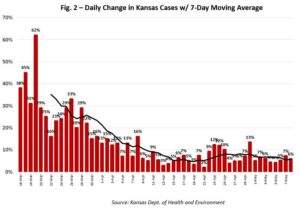
Excluding the five most populous counties and those with meatpacking facilities, the 7-day moving average in the other 96 counties is even lower, at 3.4%.
There are still 23 counties that have no confirmed or probable COVID cases, and another 27 counties have 3 or fewer total cases.
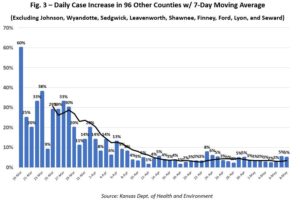
This begs the question: why is Governor Kelly still restricting activity statewide and ordering some businesses to remain closed. Her Reopen Kansas Framework provides no criteria for lifting restrictions on Kansans’ freedom; it’s just based on her evaluation of the situation.
The Sentinel sent several questions to the Governor’s office in this regard, and we’ll update the story if she responds.


